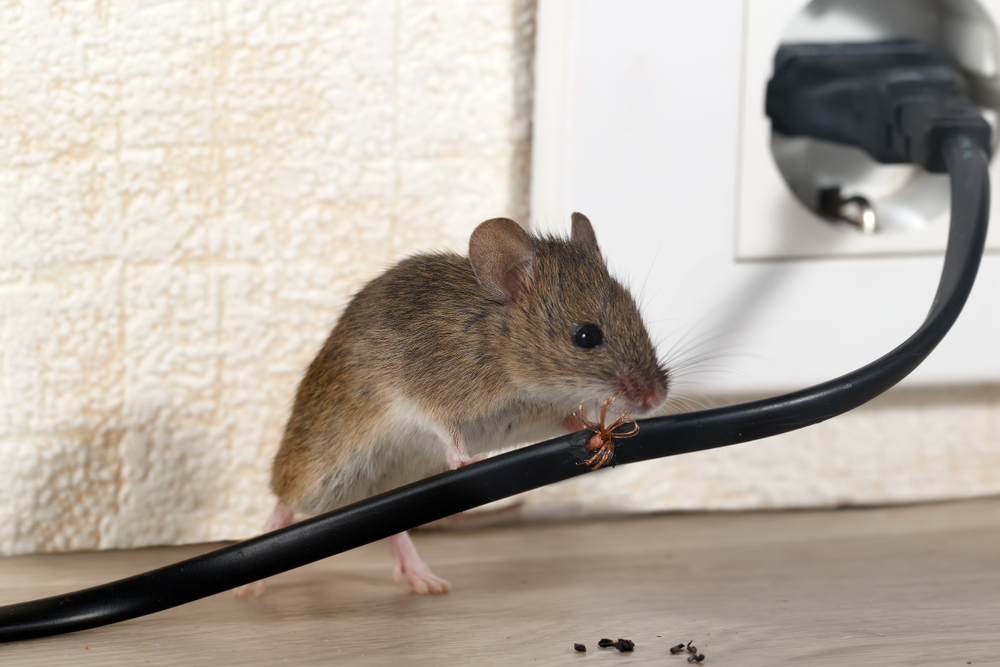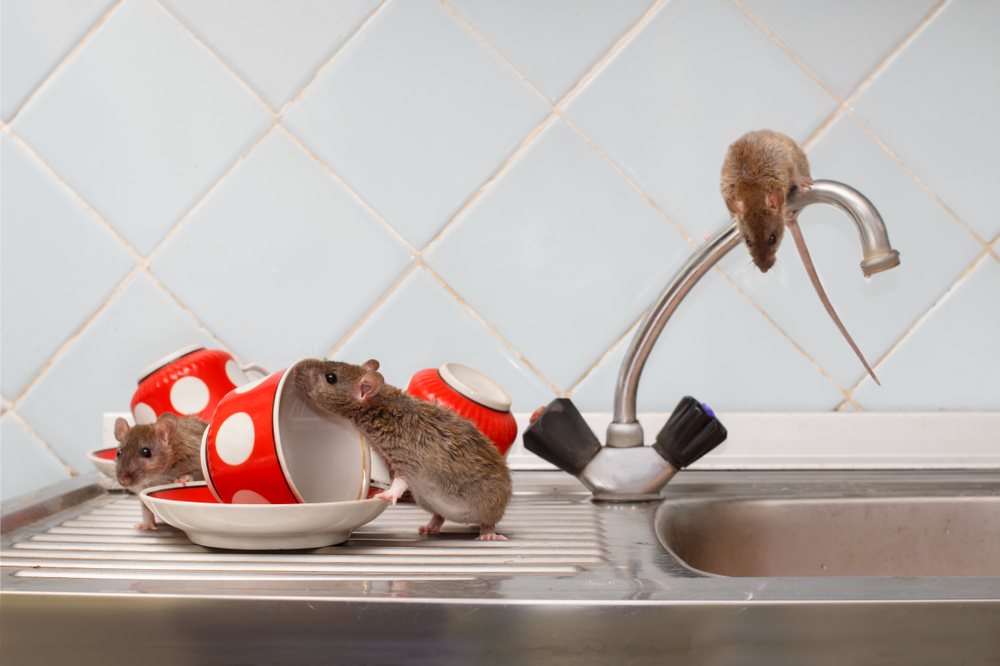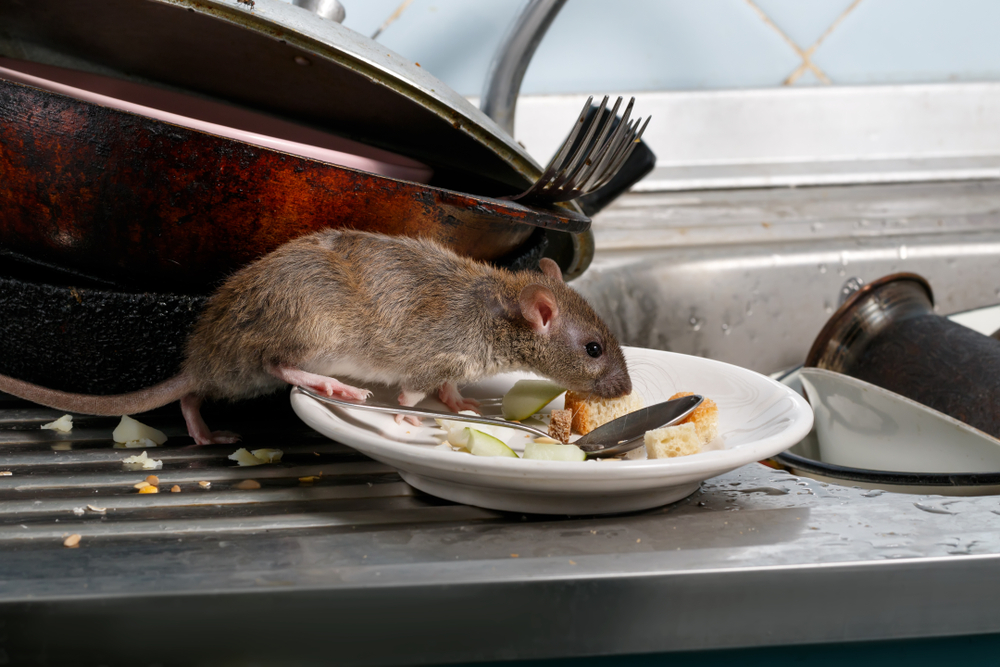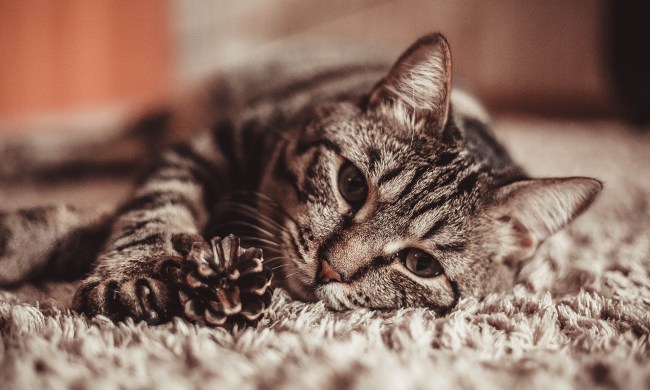Few things are more maddening than having pests in your home. Hearing them scurry around in your walls, finding their droppings everywhere, and discovering gnawed-on furniture and cables are a nightmare. In pet-free households, most people rely on spring traps, bug spray, and rat poison to get rid of these home invaders. However, rodenticides, toxic chemicals, and spring-loaded traps can put your fur babies at risk. Have you ever wondered, “Is pest control harmful to pets?” or “How do you kill bugs without harming pets?” You’re in the right place. Let’s explore pest control solutions that won’t harm your beloved fur babies.

How to tell if you have pests in your home
You’ve heard scratching sounds inside the walls, but you haven’t laid eyes on the culprit — yet. Here’s how to tell if you have pests and how you can identify which kind.
Electrical problems
Did you know that rats’ teeth never stop growing? The constant growth is uncomfortable, which is one of the reasons rats love to chew on everything they can find. If you’ve been having electrical problems, rats or mice could be to blame. Not only is it frustrating to replace your toaster, but the constant chewing also can lead to power outages, and it’s a fire hazard to boot.
Property damage
Rats and mice love to chew, but roaches can also cause significant damage to organic materials. From cardboard food packages to books to leather goods, pests can wreak havoc on your home if they aren’t eliminated.
Droppings
If you find tiny, ¼-inch droppings in your home, you’ve probably got mice. Larger droppings that resemble a grain of rice often come from cockroaches, but they can also come from rats.
Skin debris
You’ll know you have cockroaches in your home if you find their shed exoskeletons lying around your home. Roaches shed an average of five to eight times before they reach adulthood.
Strange odors
Both roaches and rodents produce a strange, musty odor, though you may also be able to detect the pungent scent of urine if you have a rodent infestation. Check dark, confined spaces if you suspect you have pests. Roaches and rodents alike enjoy nesting where they feel safe and relatively isolated.
Suspicious stains
Finding oily stains on your floors and walls is a sure sign of an infestation. Rats, mice, and roaches can all leave behind an oily residue, though it’s commonly seen in major infestations. You’re less likely to see greasy stains if you have only one or two creepy critters lurking in your home.
Sightings
The surest way of knowing you have an infestation is seeing the invading pests with your own eyes.

Pet-friendly pest elimination
Now that you know you have a problem on your hands, let’s go over how to get rid of pests without putting your fur babies in danger. Using toxic chemicals or spring-loaded traps is dangerous if you have pets. Fortunately, there are ways you can eliminate invasive pests without endangering your furry family members.
Electric traps
Best for rats and mice, electric traps are small, enclosed devices that release an electric current when a pest steps inside, killing it instantly. For safety reasons, we don’t recommend using electric traps if you have small kittens or puppies, as the trap may be large enough for your pet to wriggle inside. Electric traps are best used inside cabinets, as curious rodents will crawl inside to investigate, and your pet won’t be able to access the trap.
Live traps
Live traps are the safest, most humane way of trapping pests like rats and mice. They’re available in a wide variety of sizes, and you’ll be able to turn the animal loose instead of killing it. However, you should release it several miles away from your home, or it will be able to track its scent back to its nest.
Diatomaceous earth
While it’s safe for your pets to ingest, diatomaceous earth is abrasive enough to dissolve a cockroach’s exoskeleton. It’s ineffective if you have rats or mice, but it’s foolproof for roaches, pill bugs, fleas, mites, ants, beetles, bedbugs, and lice. If an insect has an exoskeleton, diatomaceous earth can kill it. You’ll see a large die-off within 48 hours. However, if you have an extremely large infestation, it could take a few days for the entire colony to be exposed.

Deterring future invasions
Once you’ve gotten rid of your pest problem, maintaining a spotless home should be your top priority. Dispose of any old foods immediately, taking care to sweep, vacuum, or mop your floors to get rid of any crumbs. If possible, store your trash cans away from your home, so the scent of garbage doesn’t attract pests into your dwelling. You can also sprinkle cinnamon inside your cabinets, as it will prevent pests from lingering without upsetting your fur baby’s mucous membranes. Ridding your home of pests can be a hassle, but keeping them out requires only regular cleaning and a bit of planning.



